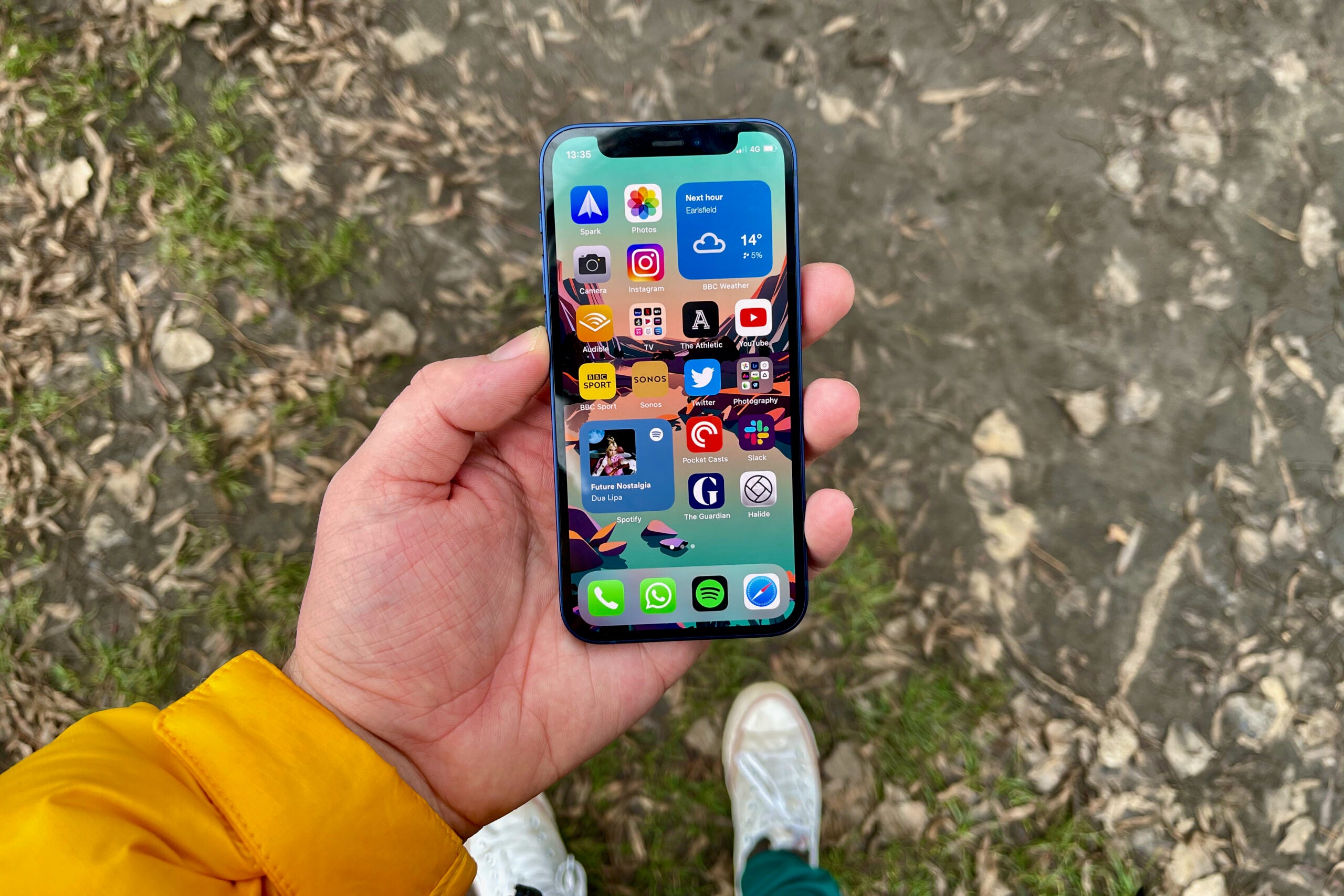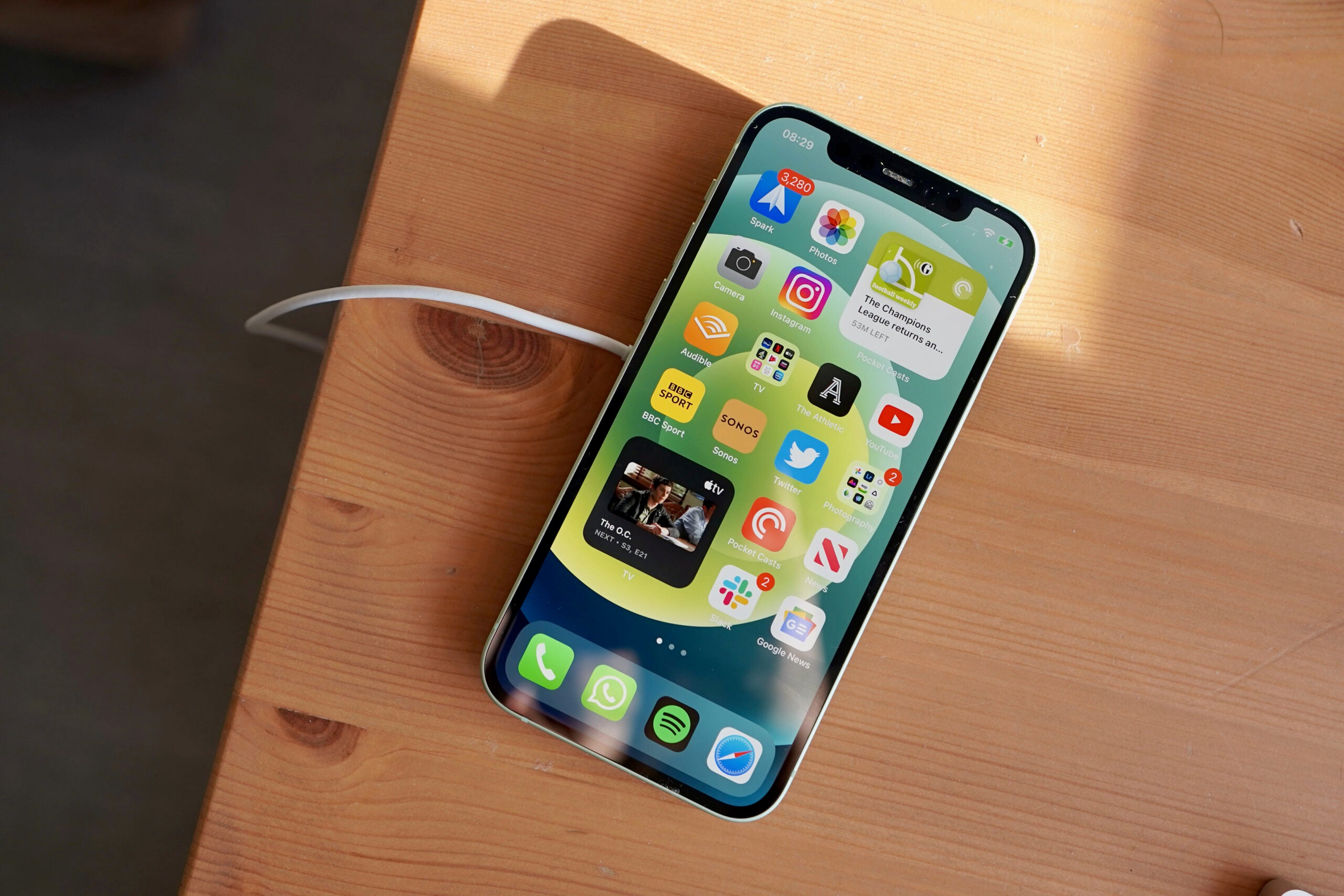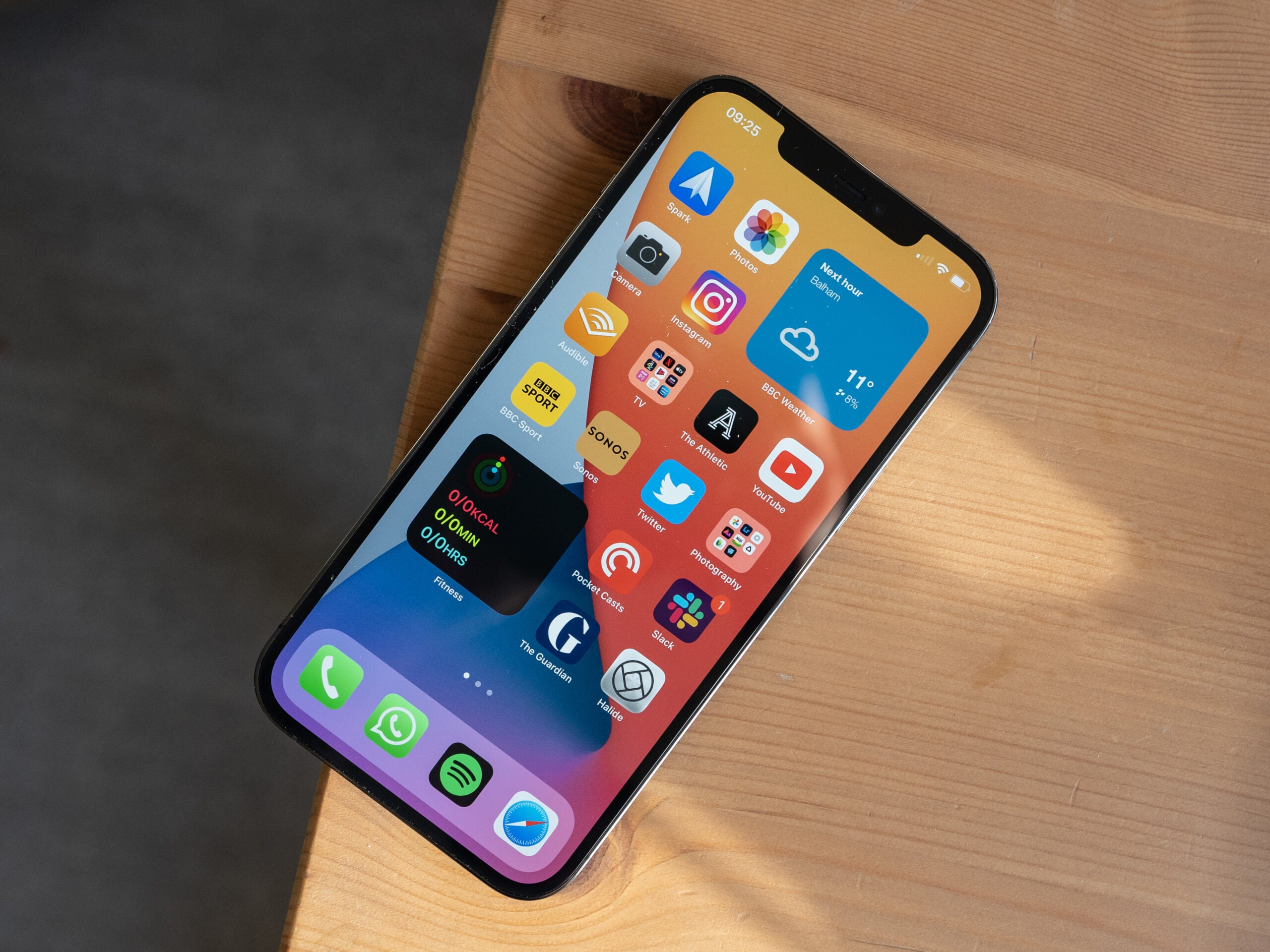iPhone 12 Pro Review
Small updates make for a much better phone
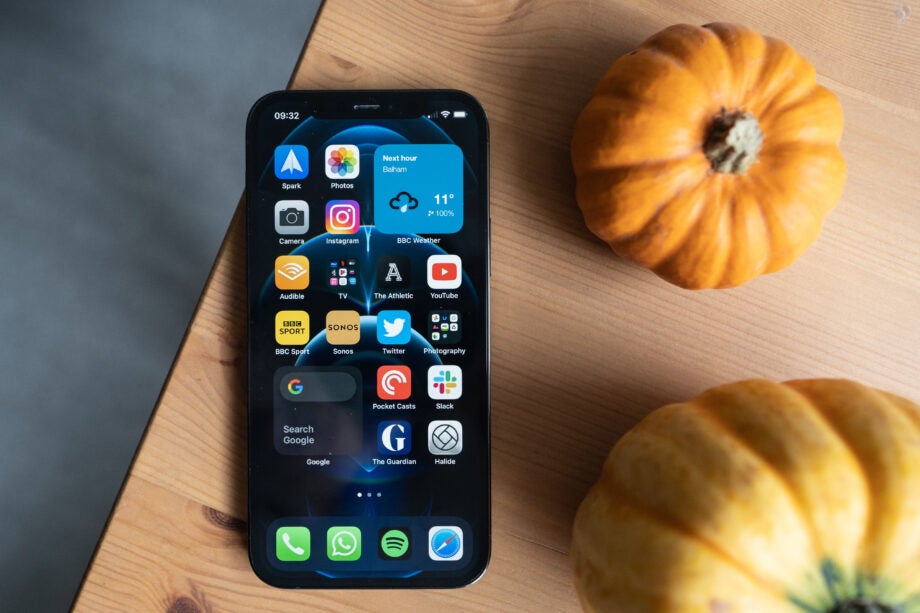

Verdict
This is a great phone that’s easy to recommend. It takes the great 11 Pro, tweaks it and adds in a glorious new design that takes things to the next level. It’s a bit of a shame that the Pro Max has the potential for an even better camera though, and a high refresh rate screen would have been nice. Maybe next year.
Pros
- A very welcome redesign
- Reliable cameras in all situations
- Accurate HDR display
- Great size
Cons
- High refresh rate screen feels sorely missed on the Pro model
- Pro Max bags the bigger camera upgrades
Key Specifications
- Review Price: £999
- 6.1-inch OLED display
- A14 Bionic chipset
- 6GB RAM, 5G
- 128/256/512GB storage
- 3x 12MP cameras
- FaceID
The iPhone 12 Pro is Apple’s current flagship, offering an even more refined iPhone 12 with a smattering of design and feature improvements.
If you want the best of what Apple has to offer in a 6.1-inch size, and are willing to pay the £999/$999 starting price, then the iPhone 12 Pro is for you.
Along with features like the A14 chipset, 5G, faster cameras and the svelte new design we saw on the iPhone 12, the Pro adds more camera skills, a classier design, double the base storage and more RAM.
So, is it worth spending that bit extra cash and is this the best phone around?
Design
- The iPhone 12 Pro is a modern take on the iPhone 5
From the moment I unboxed the graphite version of the iPhone 12 Pro I knew Apple made the right decision. Going back to a design made iconic by the iPhone 5, but tuning it up even further, makes so much sense and it completely works. This is not only the best looking iPhone ever, but the best looking phone you can buy right now.
While the iPhone 12 and 12 Pro visually are very similar, the Pro lives up to its name by feeling a fair bit smarter.
The rails are a super-shiny and seriously smudgy stainless steel, as opposed to aluminium, and the back is frosted glass. The colour choices too are less playful, with light hues ditched for more menacing darker ones. Well, that is apart from the gold variety, which is downright bling-tastic.
Thanks to this use of stainless steel, the 12 Pro has a weightier feel. It’s not heavy at 189g, but it is definitely denser than its cheaper sibling. These steel sides are also softer to the touch, and more pleasing to grip on to for extended periods. The frosted glass rear is a plus too, eschewing all fingerprints completely.
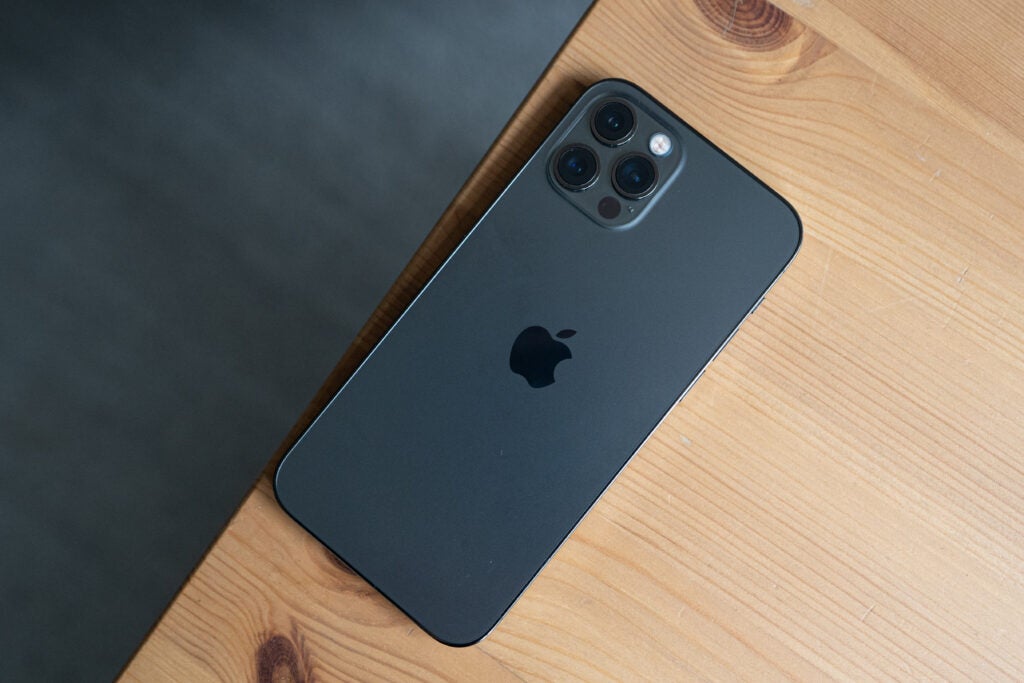
It might be heavier, but the iPhone 12 and 12 Pro are identical in size, dimensions and IP rating for water resistance. If you buy a case for one, it’ll fit the other. Of course, if you want a bigger phone then the 6.7-inch display toting Max version is coming soon.
The 6.1-inch screen is larger than the 11 Pro, however the phone itself is only marginally taller. It remains one of the smaller flagships around, offering a respite from the huge amount of large-screen devices. I can grip it with one hand without feeling like I’m going to drop it, and the extra screen, when compared to the 11 Pro, is welcome. While I would normally sway towards the larger end when it comes to a phone, this is a very nice middle-ground.
Covering the display of the iPhone 12 Pro is Apple’s new ‘Ceramic Shield’ glass. This is developed in conjunction with Corning and is, according to Apple, 4x better at withstanding drops than previous models. Apple has added nano-ceramic crystals into the glass which are said to make it much stronger and this is combined with the previously used dual ion-exchange for scratch resistance.
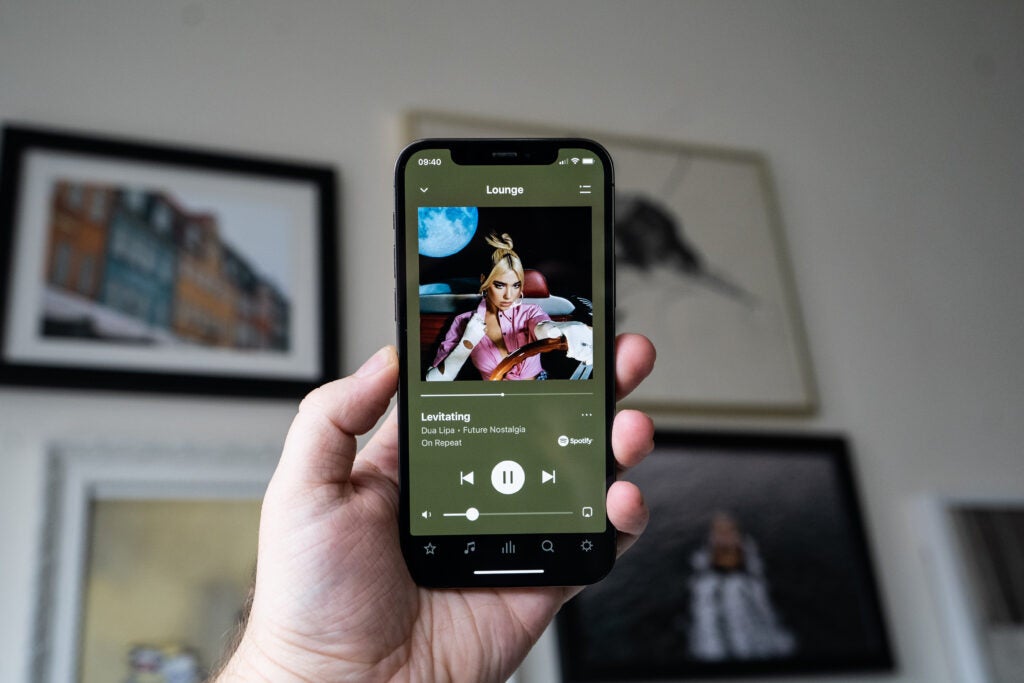
The iPhone 12 Pro isn’t likely any more scratch resistant than the iPhone 11 or 11 Pro, though. And often when things become better at withstanding drops, they become more susceptible to other types of damage, like scratches. My screen is still clean of scratches, however my iPhone 11 Pro’s display has picked up all matter of dings and small scratches over the past 12 months.
Screen
- No ProMotion, but this is still a great display
I had never expected Apple to roll out a fast refresh-rate display across the whole iPhone range, however I was hoping a 90 or 120Hz iPad Pro-like ProMotion panel might find its way onto the Pro model. That’s not the case here, and the new panel remains locked at 60Hz. It’s not a dealbreaker, but it does mean the iPhone 12 Pro isn’t quite as smooth in operation as the Samsung Galaxy Note 20 Ultra.
That quibble aside, the display here remains fantastic. It ticks every box I look for, including fantastic (but importantly accurate) colour reproduction, amazing levels of contrast and enough brightness to comfortably view outdoors in tougher conditions. The OLED panel produces perfect blacks, HDR content at 1200 nits for visible improvements and the surrounding bezel is super-thin.
You don’t have any manual control over the display – a feature now common on Android – but when it’s this good out-of-the-box I don’t really need to fiddle with any settings.
While the media experience is mostly fantastic, the notch is still here and does still make the display feel a little bit smaller than it should. You’ll likely forget about fairly quickly and the Face ID benefits are clear, yet I do wish Apple had, by now, managed to shrink it.
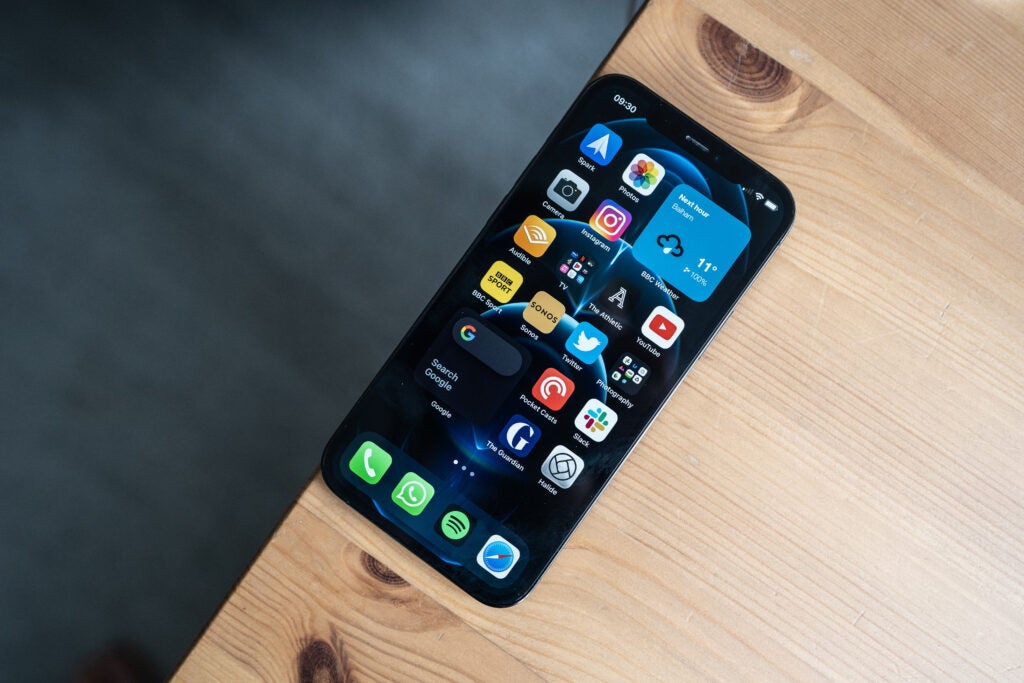
With the iPhone 11 Pro last year, you knew you were getting a seriously better display by paying more over the iPhone 11. That’s not really the case here, as the iPhone 12 is now pretty much on par with this panel. Both are OLED, have the XDR branding and the same resolution. They can also both hit 1200 nits peak brightness when you’re watching HDR content. The only real difference I can spot is a slightly higher general brightness on the Pro model, giving the screen a brighter white look when you’re outside.
Performance
- The iPhone 12 Pro is currently unmatched for speed
Powering the entire iPhone 12 line right from the Mini to the Max is the A14 Bionic chipset. This is Apple’s most efficient silicone yet, with a 5nm process and a vastly improved neural engine for AI. There’s also a 5G modem inside, giving you access to the fast data network if you’re in a supported area (and have the right network deal). Many bands of 5G are supported and the US version of the device has an extra antenna on the side for mmWave UWB connectivity. We don’t have this yet in the UK, so it’s not a loss that it’s missing.
5G was the buzzword during the 12 Pro’s launch event and it is being pushed heavily by carriers as a revolution in how you use your phone. They’ll probably be right in a few years when the service is far more widespread, but as of now I think the noticeable difference for most is minimal. I live in an area where 5G is available if I walk a bit down the street and while its nice to see that 5G logo pop up, the actual download speeds on Three are barely higher than 4G and actually a lot less than an EE 4G SIM I used to compare.
In a few years when 5G is far more widespread and we’re out again attending gigs and back in big stadiums and festivals then the benefits will likely be a lot more obvious. For now though, it’s far from a must.
Interestingly, Apple has a Smart 5G feature enabled by default that switches you back down to 4G if it judges you don’t really need the benefits of the faster network. This seems to be a good way to juggle battery life and faster speeds, only giving you the full power of 5G when you’re downloading something.
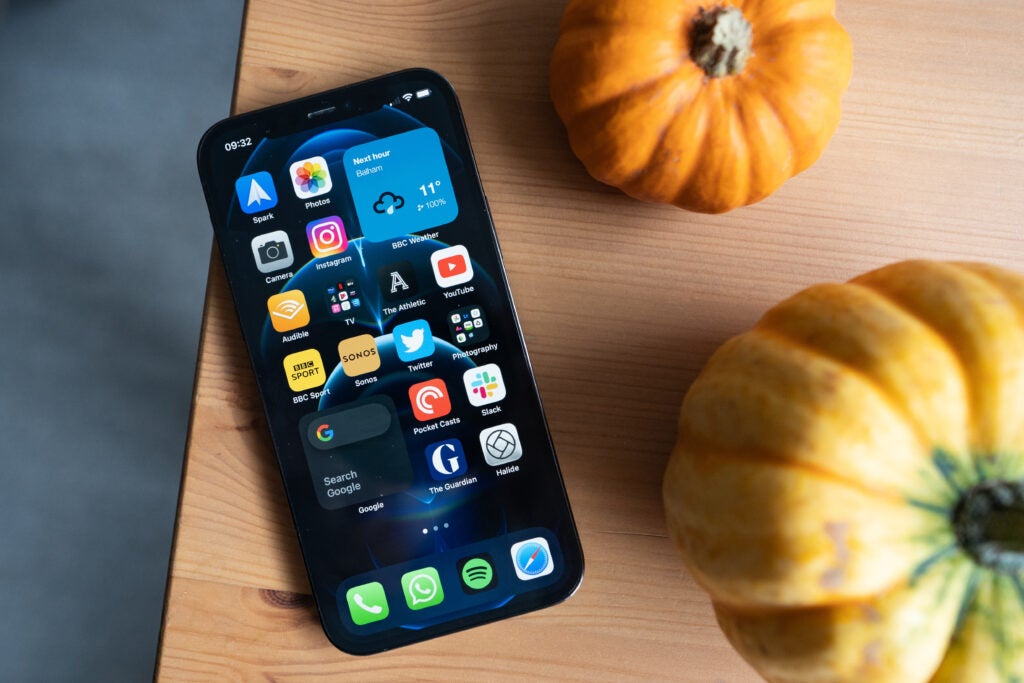
The iPhone 12 Pro is one of the fastest phones around – if not the fastest. I haven’t noticed any lag or slowdown during my time with the phone and save for a few iOS 14 bugs the experience has been fluid and fantastic. In the synthetic Geekbench 5 benchmark app – which should give a decent overall view of performance – the phone scores 1597 in single-core and 3968 in multi-core. This is a seriously high score on both counts.
Games run like a dream and there’s enough good stuff on Apple Arcade to make this a great little portable gaming machine. Especially when you connect up a controller.
The 12 Pro also benefits from more RAM than the iPhone 12 (6GB as opposed to 4GB) and while it’s hard to spot the benefit it should keep the phone fast over a number of years. You’ve also got base storage of 128GB (alongside 256GB and 512GB variants) available – that’s double the iPhone 12. These two reasons might make the upgrade worth it for some.
Audio from the speakers is very good, call quality is strong and there’s Wi-Fi 6 support if you have the right router.
Camera
- Small tweaks in every area make a big difference
It’s with the camera skills where the iPhone 12 Pro truly sets itself apart from the cheaper iPhone 12 and stands as one of the best camera phones around. Along with an extra 12-megapixel sensor with a 52mm equivalent lens for 2x shots, there’s a clever LiDAR sensor that enables faster low-light focusing. Its video skills are marginally better too, with 60fps video supported when you’re shooting in Dolby Vision HDR.
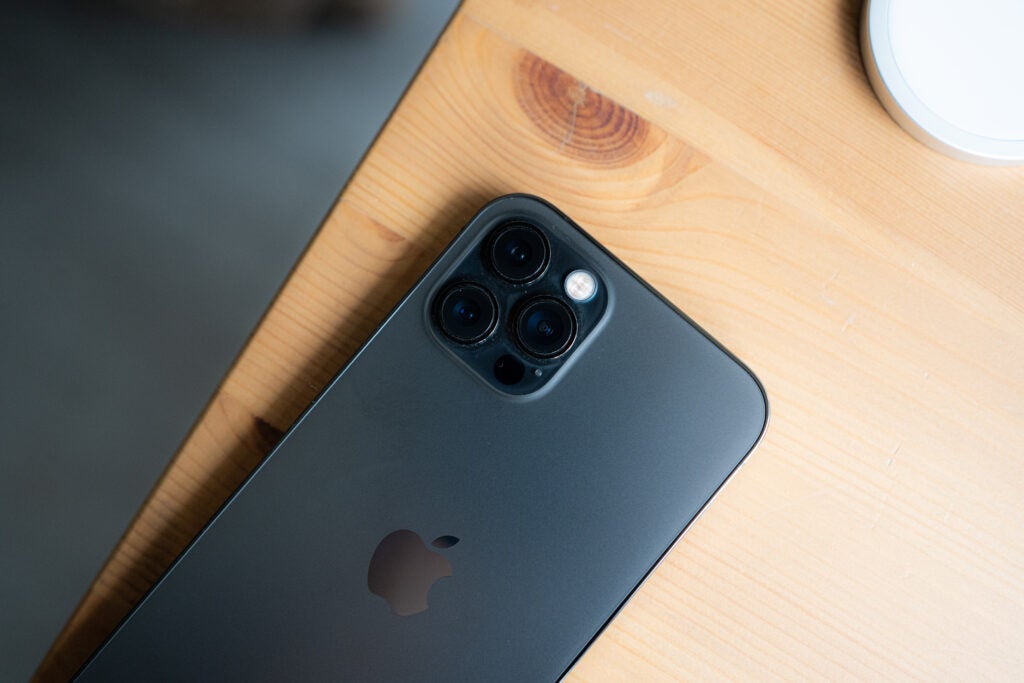
In terms of the main 12MP wide camera though, the Pro has the same set-up as the iPhone 12. The Pro Max, on the other hand, has a much bigger sensor so that could be the model to look out for if you really want the best camera experience. The final camera is an f/2.4 ultra wide which can now take Night Mode shots.
The main 12MP wide camera has a faster f/1.6 lens which lets in more light and it also benefits from a few updates on the back-end, including Smart HDR 3. This is very noticeable, as it really helps exposure and dynamic range look great in snaps. Even if you’re taking a photo of tricky environments, you’ll have level exposure pretty much every time. Colours don’t blow and highlights and shadows are accurate.
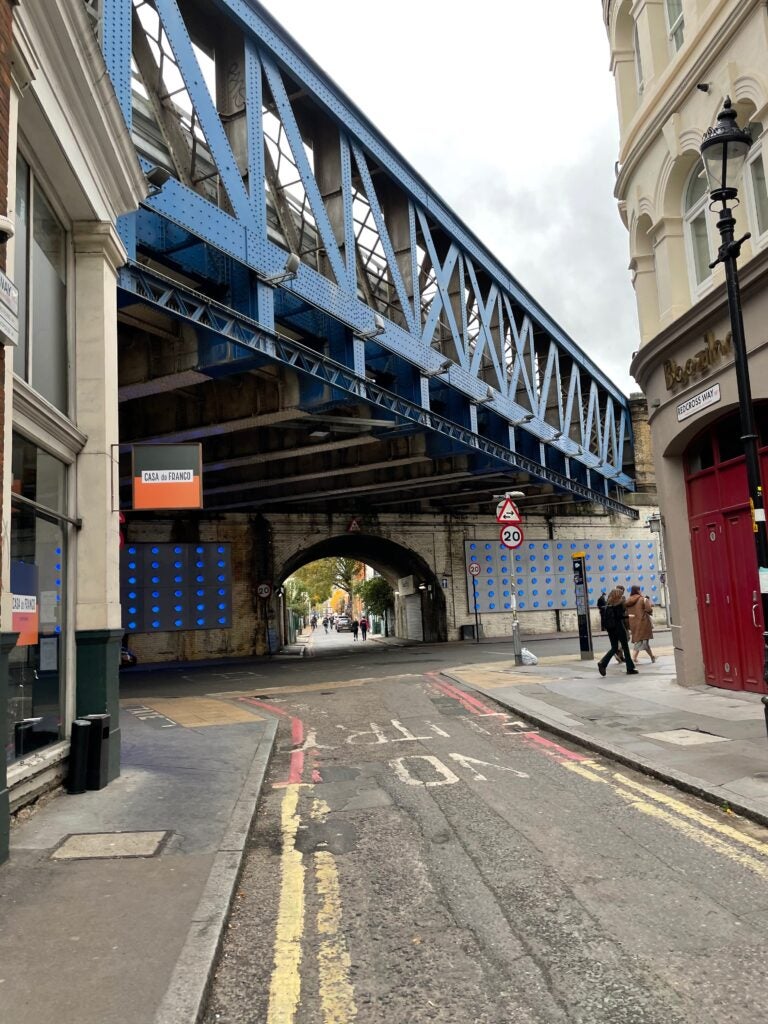
Apple added Deep Fusion last year and it used once again to really bring out a high level of detail. See the photo of the dried flower below and you can pick out individual details that aren’t visible in the photos of other phones.

Detail is fantastic
Where the iPhone falls down slightly is in its zoom skills. While shots from the 2x camera are good, these just can’t compete with phones like the Huawei Mate 40 Pro and Galaxy Note 20 Ultra, which have periscope lenses for true optical zooming to 5x and 10x.
I like the addition of the ultra wide sensor, and being able to use Night Mode with it makes it more useful. Yet, the sensor is still not as good as the main camera and snaps are a lot worse. It’s nice for variety though.
LiDAR is a new sensor on the 12 Pro and it helps mainly with low-light performance (along with some AR tricks). For instance, focusing in poor lighting is far better and more accurate than on previous iPhones and the iPhone 12. Instead of lots of focus hunting, it locks on right away. Low-light portraits are enabled too, and again can look good if you frame things right.
It’s a tough call of which phone has the better low-light performance – but that’s not a bad thing. Blacks are a little deeper on Pixel 5 shots, while the secondary cameras are better on the Galaxy Note 20 Ultra. I like the reliability of the iPhone though, and the Night Mode usually churns out good pictures even if you still can’t manually enable it.
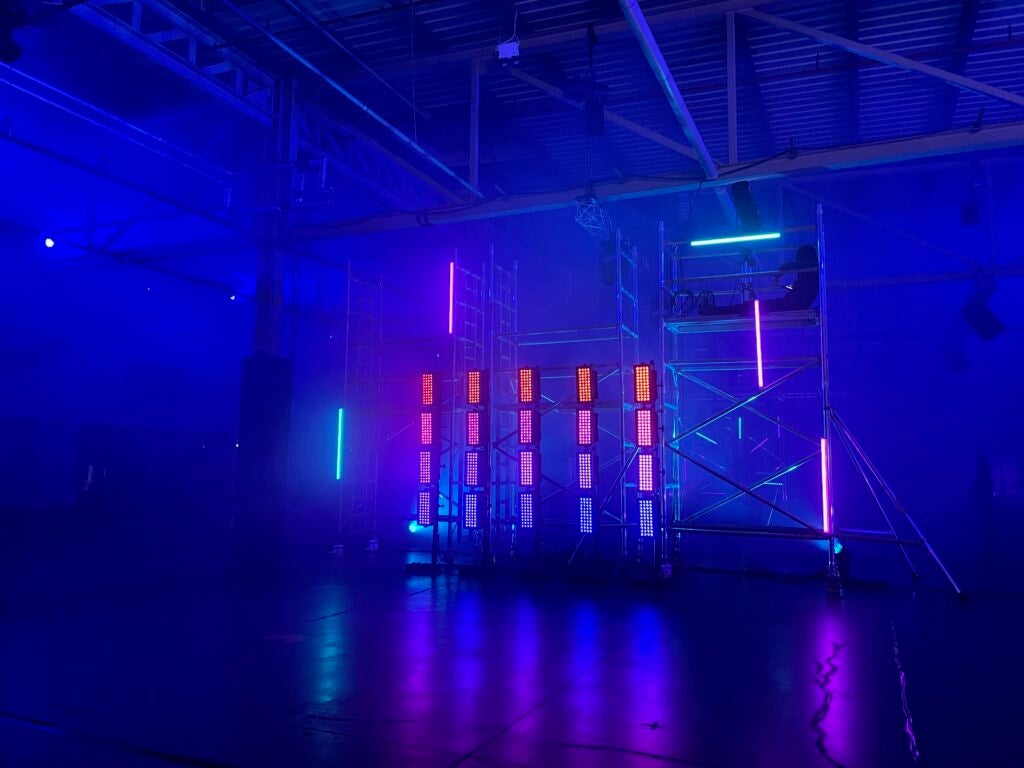
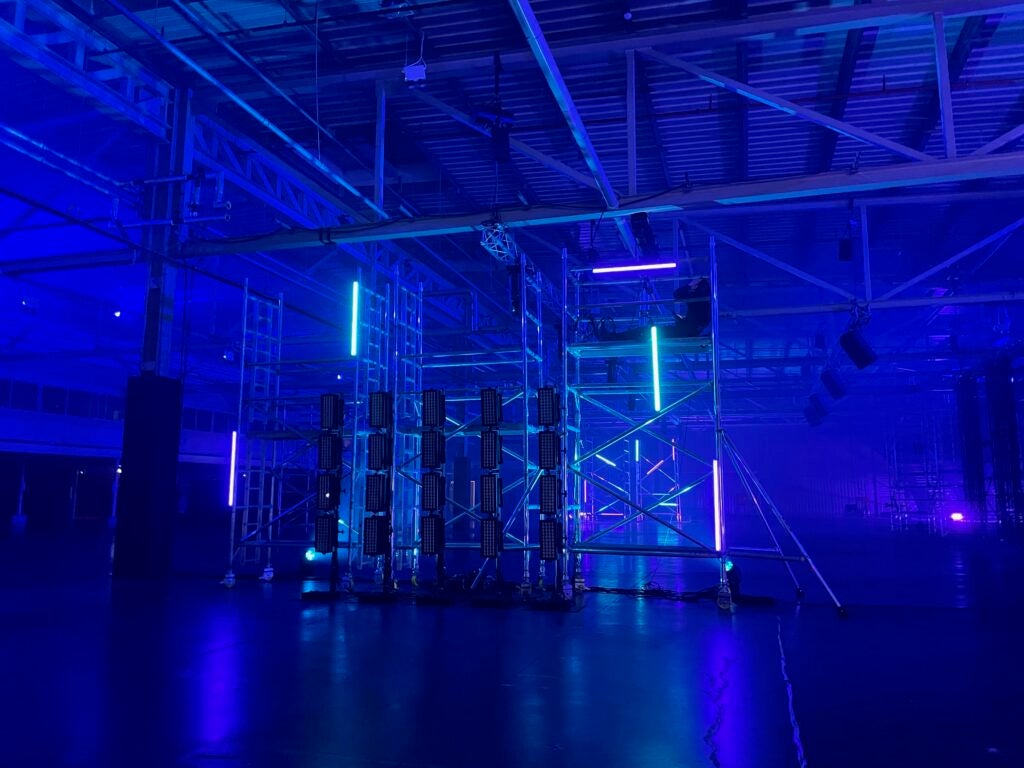
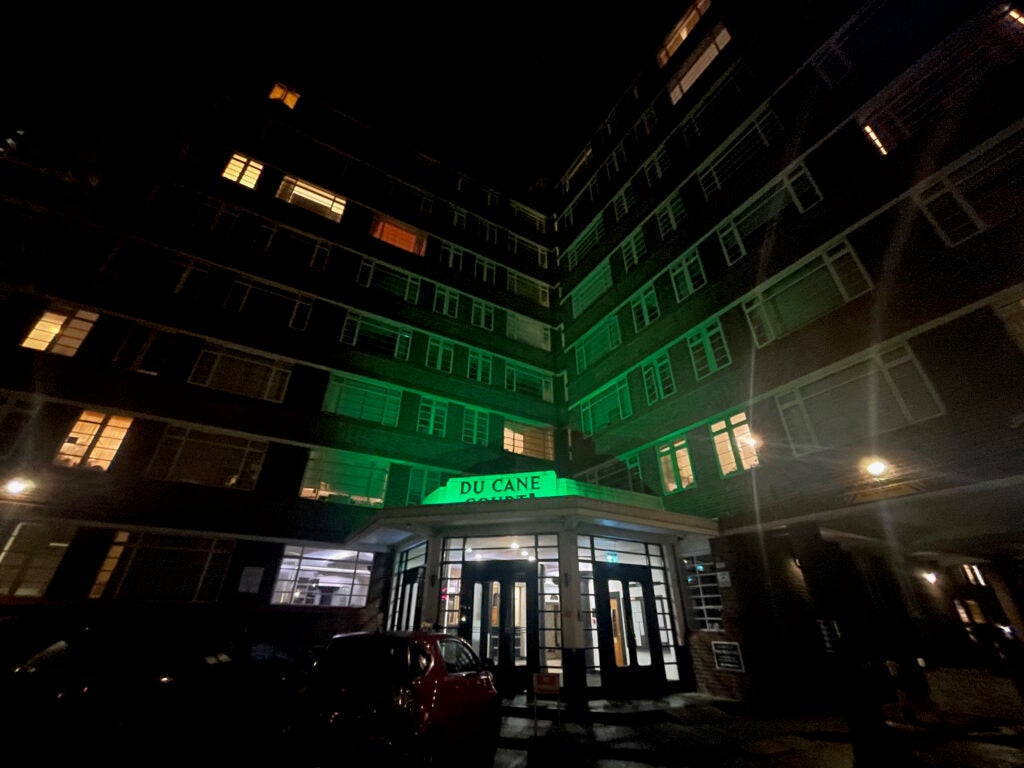
Low-light ultra wide
On the front, there’s a 12MP camera and it is very much the same as before. Selfies are fine, but they can look a little washed out when compared to the contrasty look you’ll get from a Pixel 5. It’s very accurate for facial unlocking though.
Video has always been a highlight of the iPhone and things are improved once again with HDR.
HDR gives you better contrast, brighter colours and an overall more pleasing look. It makes the already excellent footage that bit better.
The iPhone 12 Pro records HDR video in an HLG format (a favourite of broadcasters, like the BBC) with some Dolby Vision encoding on top to give scene-by-scene metadata.
The results are stunning and especially when viewed on the iPhone 12 Pro’s HDR screen. Colours pop, skies stand out and there’s a real sense of flair that now feels missing when I go back to the iPhone 11.
Of course, there are some compatibility issues. Apps will struggle with the video and even trying to view it on a Dolby Vision TV with an Apple TV 4K also isn’t successful due to the formats used. You might want to turn it off (it’s on by default) if you want them to be as widely compatible as possible.
Battery life
- MagSafe is a nice option, though you’ll likely be buying your own charger too
You probably know by now that the iPhone 12 Pro doesn’t come with a plug inside the box. There are no headphones either. Apple says this is to aid its aim of going carbon neutral and it does make for a far slimmer box.
But, by keeping the Lightning port (and not switching to USB C) I think most people will still need to buy themselves Apple’s new 20w plug – that is unless you’re updating from the 11 Pro.
For one, the cable included needs a USB-C port-toting plug, so it won’t attach to an older one. Those older chargers (we’re talking base iPhone 11 and older) have measly 5w adaptors that charge very slowly. You’ll be looking at multiple hours to fully charge this phone with a 5w charger.
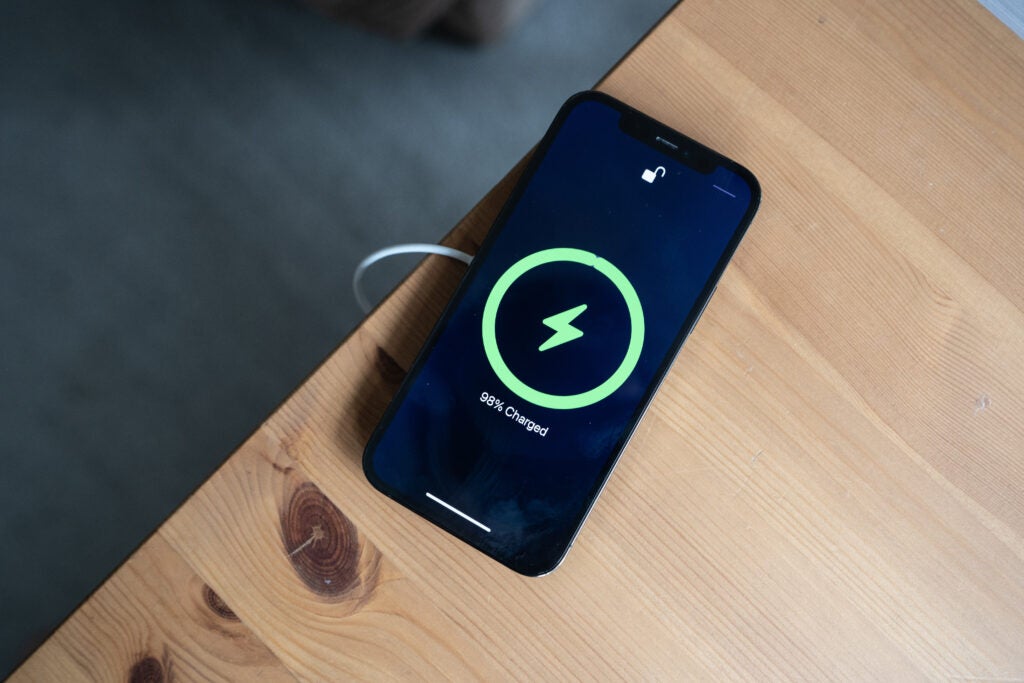
As a result, you really do need to buy another adaptor and that’s an extra £20 to add to the price of the phone. You can also pick up the new MagSafe Charger (again, this will need a 20w plug). This is a magnetic puck that attaches satisfyingly to the back and charges wirelessly, using the Qi standard at 15w. It’s faster than using any old wireless pad, but whereas you’ll get 50% juice from 30 minutes plugged in, you’ll need an hour to get that far with MagSafe. Still, it solves one of the biggest issues I have had with wireless charging as you can use the phone while it’s charging.
Apple improved the battery life notably last year with the iPhone 11 Pro, and you’ll get roughly the same endurance from the new model largely due to the addition of 5G and larger display. I’ve been comfortably getting through the day and managing to hit six hours of screen-on time. If you’re coming from an iPhone X or XS, you’ll notice the improvement.
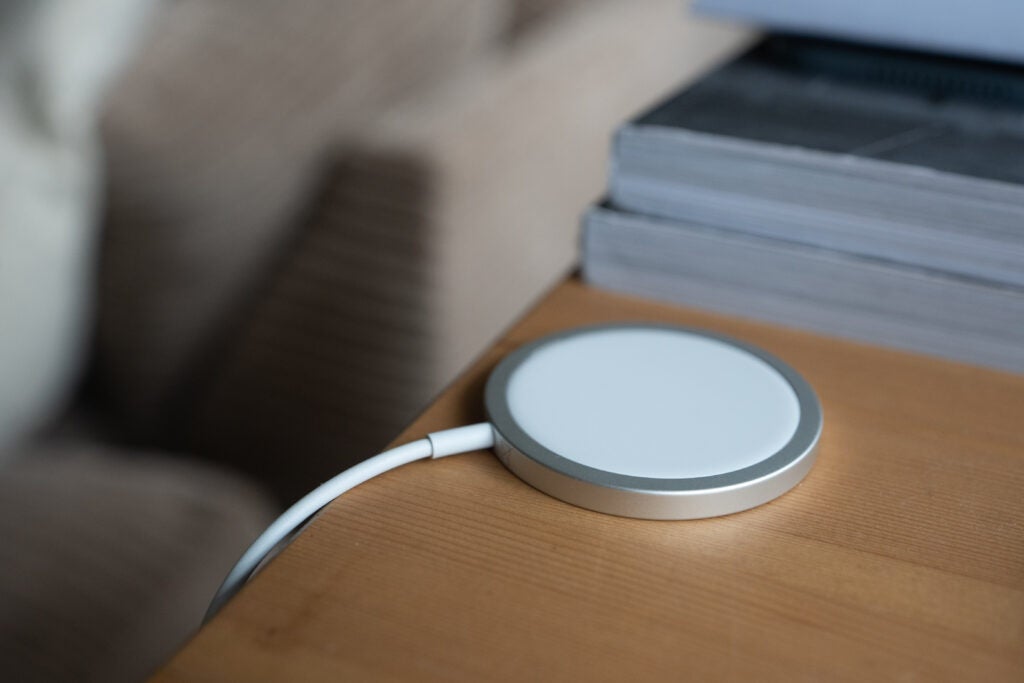
The MagSafe Charger
Should you buy the iPhone 12 Pro?
The iPhone 12 Pro is £300/$200 more expensive than the iPhone 12 and for that you to get a nice selection of benefits that are certainly worth it if you want the best iPhone experience. The materials are classier, there’s a little more RAM and base storage, the cameras are far more versatile and the screen is a bit brighter.
The camera improvements will be reason enough for many to plump for this model and I do appreciate the extra versatility of not only the zoom lens, but the LiDAR sensor for both low-light portraits and faster focusing.
Overall, this is a great phone that’s easy to recommend. It takes the great 11 Pro, tweaks it and adds in a glorious new design that takes things to the next level. It’s a bit of a shame that the Pro Max has the potential for an even better camera though, and a high refresh rate screen would have been nice. Maybe next year.
FAQs
You can get the iPhone 12 Pro in blue, grey, silver and gold
Apple released the iPhone 12 Pro on 23 October 2020
The iPhone 12 Pro has an IP68 rating, meaning it is resistant to some, but not all, water.
You can have one SIM and one eSIM with the iPhone 12 Pro, so it is dual sim in some respects. It doesn’t hold two separate SIM cards, though.
All the models of the iPhone 12 Pro support 5G networks.
Specifications
Trusted Testing Data
Jargon buster
5G
Offering faster download and upload speeds when compared to 4G. Great for game streaming and HDR video playback. Not supported everywhere yet and speeds vary wildly.
Apple A14 Bionic
Apple’s 2020 flagship mobile chipset that powers the iPhone 12 line.
iOS
The operating system that powers Apple’s mobile devices.
Lightning
Apple’s port of choice for charging and data transfer. You’ll find it on the cheaper iPads and all of Apple’s phones.
mAh
An abbreviation for milliampere-hour and a way to express the capacity of batteries, especially smaller ones in phones. In most cases the higher the mAh, the longer the battery will last but this isn’t always the case.
Qi wireless charging
The most common format for wireless charging and the one supported by the majority of devices. Charge speeds vary a lot by the phone.
IP68
The most popular and useful level of water resistance. Usually means a device can withstand dust, dirt and sand and be submerged in 1.5m of water for 30m however this can sometimes vary. Read more in our IP68 guide for more.

